Welcome to our first post analysing today’s 2018 A-Level and AS-Level entries.
Without further ado, a look at some of the main trends.
A-Level entries
Overall, A-Level entries are broadly stable – down 2% across the UK. (For context, the 18-year-old population fell by 3.5% between 2017 and 2018.)
Image source: results.ffteducationdatalab.org.uk
This overall change masks a number of subject-level trends that are worth commenting on, though.
There was a very large percentage increase in computing entries, albeit still from a relatively low base.
Image source: results.ffteducationdatalab.org.uk
There were also small increases in maths (up 3%) and science subjects (biology 3%; chemistry 3%; physics 3%), continuing a general trend towards STEM subjects in recent years.
Declining entry numbers were seen in English language (down 15%), religious studies (down 21%) and geography (11%), among others.
Entry numbers in the large-entry modern foreign languages were also down (French down 8%; German 17%; Spanish a little less at 4%), though entries in other modern languages were up by 3%. There are now more entries in Chinese than German.
A-Level grades
Overall, there have not been big changes in the mix of A-Level grades awarded.
This summer, 26.4% of entries received an A* or A, versus 26.3% of entries last year. The proportion of A*s was down slightly, from 8.3% of all entries, to 8.0%.
And 77.0% of entries received a C or above, versus 77.4% last year.
Image source: results.ffteducationdatalab.org.uk
How can this be, when we’re now in the world of new, ‘tougher’ A-Levels in most large-entry subjects?
The answer is the approach to maintaining standards used by the qualifications regulators of England, Wales and Northern Ireland known as comparable outcomes. This takes into account the prior attainment of the cohort sitting A-Levels this year when deciding what mix of grades should be awarded. As we noted on Tuesday, any changes in national results therefore tells you more about changes in the prior attainment profile of students than changes in standards achieved.
As we also mentioned in our blogpost, last year much attention was given to the fact that, across the UK, male entrants overtook female entrants in the proportion of A*-A grades achieved.
We speculated then that boys’ – there will be some adult entries, but the overwhelming majority of entrants will be aged 18 – results might be affected by a football tournament that overlapped the A-Level exam period, in which England were doing well right up until the point they stopped doing well. (Research carried out at the University of Bristol does suggest that it is boys who are affected more than girls [PDF].)
There wasn’t too much change in results overall in England. At the top end of the scale, English boys’ results haven’t quite held up as well as girls (at A grade or above, down from 26.6% to 26.4% for boys, whereas girls’ results went up from 25.9% to 26.0%).
In Northern Ireland and Wales, however, boys’ results at grades A*-A improved relative to girls’. In Wales, 26.6% of boys’ entries were graded A*-A, up from 25.1% last year. Girls’ results improved by a smaller margin from 24.9% to 26.0%. In Northern Ireland, year-on-year changes were even more pronounced. Boys’ results improved from 26.8% to 29.7% whilst girls’ results fell from 33.3% to 30.9%
AS-Level
The picture at AS-Level is somewhat different to that seen at A-Level.
Entry numbers are down hugely – by 52% – again across the UK, as the chart below shows.
Image source: results.ffteducationdatalab.org.uk
In England, AS-Levels have now been decoupled from A-Levels in all subjects, meaning they no longer count towards the A-Level. (There will have been some resits in legacy AS-levels this year in the final round of reformed subjects, including mathematics.)
We think that decoupling explains a large part of the decline, but funding cuts also play their part – at the start of the last academic year, we noted that fewer students in sixth forms were starting four subjects.
This is given further weight by the fact that entry numbers are also down somewhat in Wales, despite AS-Levels still counting as 40% of an A-Level there. (The picture is less clear in Northern Ireland, where entries are down in absolute terms, but possibly not so when achange in size of the 18-year-old population is considered.)
We’ll be returning to look at AS-Levels in more detail later today, trying to answer questions such as who are the pupils still taking them in England.
And finally
Finally, a passing mention to general studies A-Level. Taken by not much short of 50,000 entrants as recently as 2010, this year there were only 3,422 entries across the whole of the UK.
The subject is one of those not being reformed, so this is the final year in which pupils will have been able to take the subject.

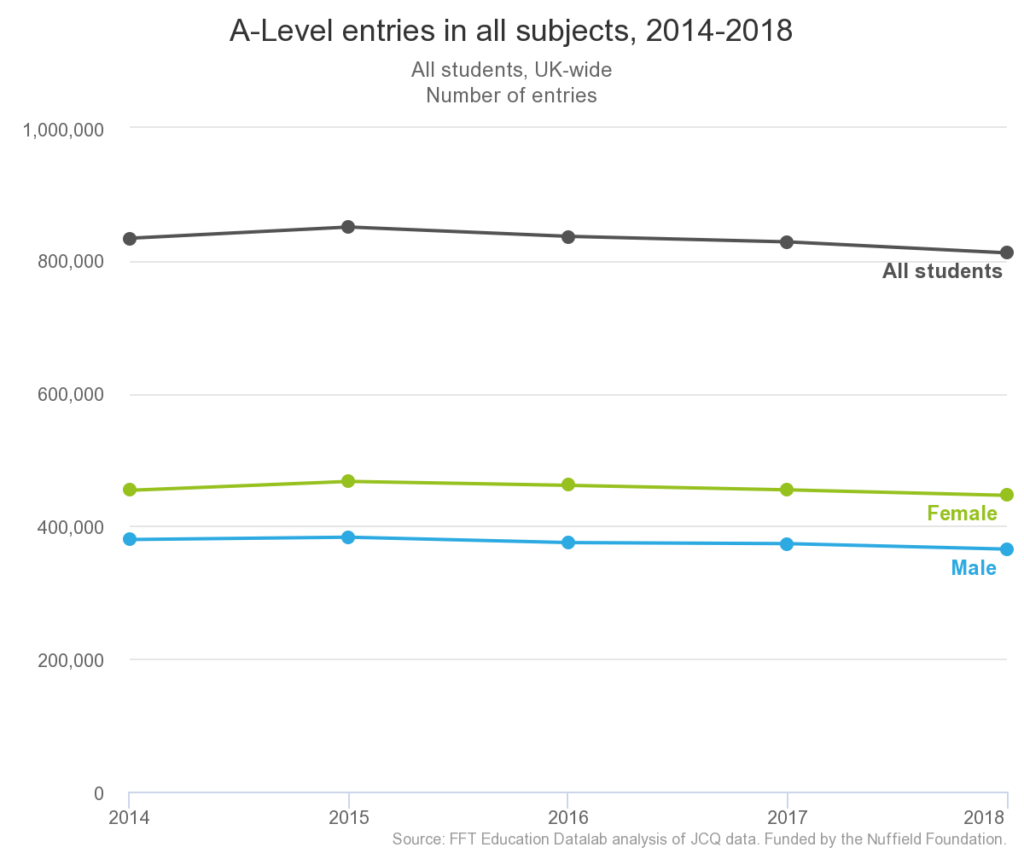

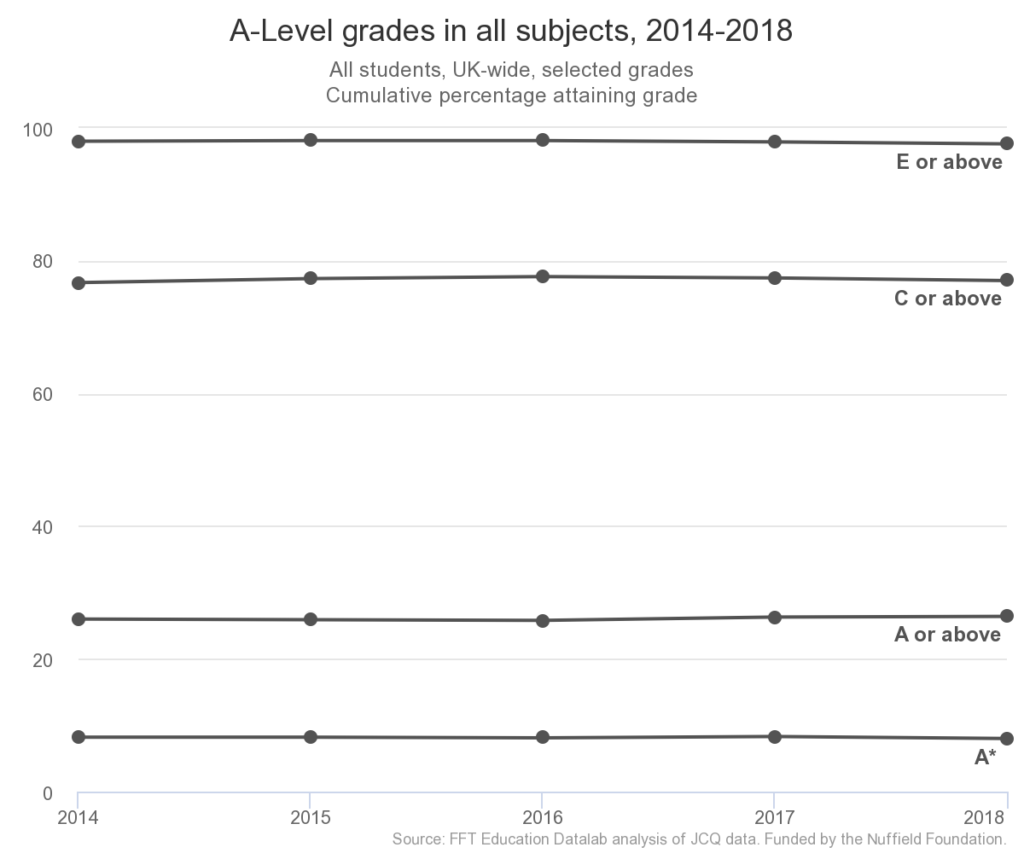
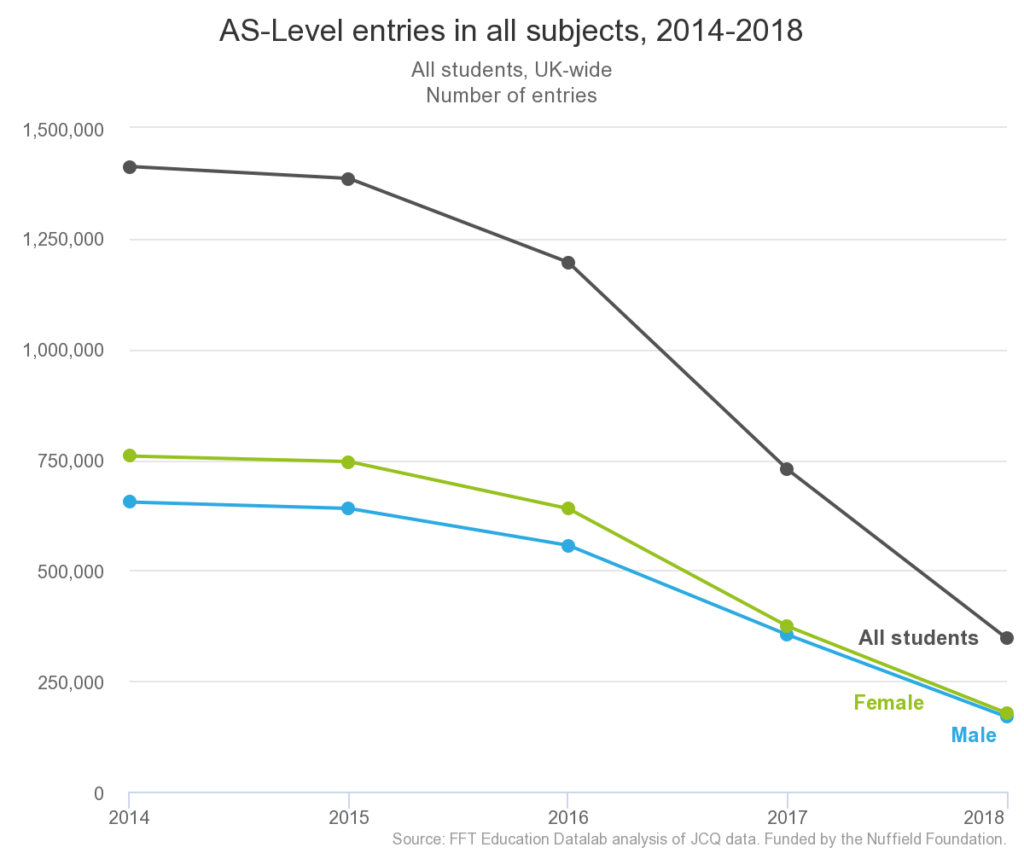
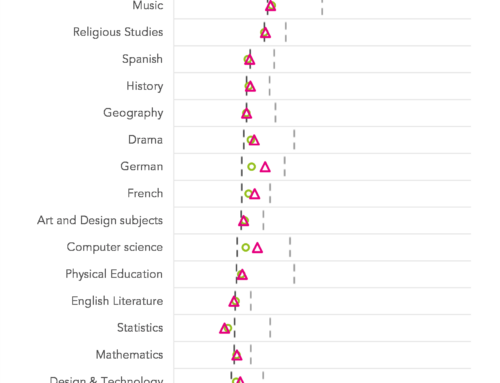
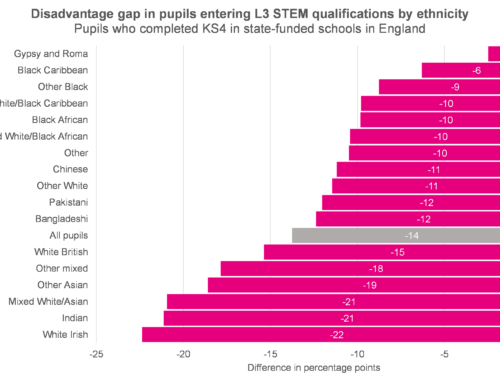



Leave A Comment